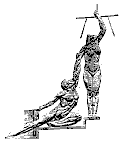WHOLE CLASS TEACHING TRAINING MODULE READ WRITE
6 Oliver Goldsmith Primary School Whole School AttendanceABB NOT FOR RELEASE PUBLICATION OR DISTRIBUTION IN WHOLE
ACTIONS IN COMPLIANCE WITH FERC ORDER NO 719 WHOLESALE
ACUTE WHOLE EFFLUENT TOXICITY TEST REPORT NPDES PERMIT PROGRAM
Agenda Item 5(a) iv Wholesale Electricity Market pre Rule
ANALYSIS OF WHOLE BLOOD SAMPLES OPTIMIZATION OF SAMPLE PREPARATION
Whole Class Teaching
Whole Class Teaching
Training Module

|
|
Read |
|
|
Write |
|
|
Activity |
Whole Class Teaching
Introduction
This paper aims at presenting you the advantages and disadvantages of whole class teaching as a teaching method in multigrade classrooms. In general there are three main types of teaching usually found in multigrade teaching, namely: The “whole class teaching”, “grouping” and “individualised learning”. Every of these methods have its place in multigrade classroom and reveal its usefulness under specific teaching and learning conditions. This paper is going to present the characteristics of the “whole class teaching” as a method for teaching in multigrade classrooms. Whole class teaching is a rather familiar method for all teachers as it is the main teaching method in monograde schools. Thus, we are going to focus on the advantages or the implications of implementing the method in multigrade teaching situations only. You will be asked to use the method in a lesson and follow certain steps that will help you to understand how “whole class teaching” can be used with success in multigrade teaching.
Theoretical Background
In Whole Class Teaching as it is clearly indicated by its name the class is considered as a whole and the teacher teaches students within a common framework. This is the simplest approach for teaching. The teacher has only one lesson to prepare, so both time and effort is saved. Fewer teaching preparations have to be made and less supporting material has to be prepared.
The main characteristic of this kind of teaching is that the lesson is planned for students with average level of ability in the class. Depending on the lesson the work might be relatively easy to be planned on. In addition in whole class teaching it is rather easier to record students’ progress or mark children’s work and keep good discipline.
However there are significant disadvantages for the multigrade situation, serious traps appear for the teacher who uses whole class teaching for most of his work, particularly in the basic subjects of language and maths. The whole class teaching approach is usually very teacher-centred. A lesson is presented -often in the chalk/talk style - and then either an exercise is set for the whole class or a discussion is initiated.
The main problem here is that the entire lesson is aimed at the average student in the room.
As we know, in the multigrade situation the range of achievement level is often very large -certainly far wider than in most straight classes. Inevitably, in a lesson like this, there will be low achievers failing to keep up with the work and becoming more and more despondent day by day. There would also be high achievers, bored by the teacher's lesson which is not challenging them intellectually or providing them with any new skills or knowledge.
Both groups -the low achievers/younger ones and the high achievers/older children -will become a problem to the teacher in terms of discipline and noise.
But, most importantly, these children are being ineffectively taught. The low achievers will lose confidence in themselves when they fail in this lesson every day of the week. The high achievers will lose interest, and this may well affect their attitude to school and learning for a long time.
The same situation occurs in monograde teaching as well, but of course most of the times the problem is not so obvious. It is common true that is a single grade class the range of student ability levels varies significantly even if the children are of the same age and the class is considered as a homogenous group by the curriculum. This explains partly, the variation in student performance levels of pupils of the same class and the apparent different learning outcomes. Many teachers in monograde classes realise these dangers too and prefer to take measures by introducing grouping for students for certain activities.
However, we must always remember that the whole class teaching method has a place and an important role in the multigrade school. The teacher benefits by
Having more contact with all the students
Easier material preparation
Easier monitoring student progress and behaviour
Increased student engagement in working with the whole class in specially designed activities
The Whole class teaching can work particularly well in a serious of activities of the multigrade class like the following:
spoken language work -e.g. story reading and telling;
prepared "talks" and presentations by children on different subjects;
general discussions generated by the teacher, language and problem-solving games;
physical education;
music -singing, playing, dancing, art and craft;
drama -class plays;
environmental studies;
The multigrade school, as it has been mentioned before, covers a wide range of ability, age and interests, but working together as a completely mixed group for part of the day, as this is the situation in Whole Class Teaching, can help students to develop cognitive skills and facilitate their learning as well as to improve their relationships with each other. The Whole Class Teaching method eventually results to a situation in multigrade classroom which is not as competitive as the Monograde School often is. The children, too, feel as if they really belong to a class. They also benefit from exchanges of ideas, opinions and skills far broader than those found in the normal straight class These collective discussions can be an enriching experience for children at all levels.
Suggestions for further study
The Multigrade classroom , A resource for small Rural Schools, Book 5: Instructional delivery and grouping, NWREL, pages: 26-31
Suggestions for good practice and activities
Within the framework of this training activity you are going to implement “Whole class teaching” in your class in a way that suit the multigrade school setting. You will be asked to take into account aspects of multigrade teaching that will help overcoming implications like the ones presented in former paragraphs of this paper and in parallel contribute to successful teaching and learning.
Schedule a Whole class teaching activity for a subject of your choice
Try to choose a subject of the general interest of the children. For instance it could be something that has to do with the history of your village or town or the climate of the region.
Careful planning, as always, is crucial in preparing to teach a lesson to an entire multigrade class.
Bellow you can find some general guidelines that could assist planning for Whole class Teaching.
Whole class teaching
Tips on designing, developing and implementing whole class teaching activities
The following is
extracted from: The
Multigrade classroom, A resource for small Rural Schools, Book 5:
Instructional delivery and grouping, NWREL
Planning for Whole
Class Teaching
The teacher should follow three
general steps:
1. Choose a concept, theme, or skill
determined to be important to all students.
2. Decide on an activity to introduce
the concept to the whole class.
3. Develop appropriate activities for
each instructional level and pay special attention to:
Subject integration (writing,
reading, science, math, etc.)
Needed resources
References students can use
How each level will be introduced
to their activities
How students will be evaluated
Develop special modules and worksheets for students if necessary.
If you have a narrower range of ability and age levels to teach, then several grades could complete the same activity.
Another approach when working with a narrow range of student levels is to require the same general activity, but add requirements for higher-performing students. Although a lesson focuses on history, students might be also engaged in writing, reading, art, and research skills.
The whole class can be taught together when a common topic can be identified that cuts across the different levels. In general, divergent or open ended tasks are most appropriate.
Below listed, you can find some more advices on how to plan your activities and develop lesson plans for whole class teaching.
The following is
extracted from: The
Multigrade classroom, A resource for small Rural Schools, Book 5:
Instructional delivery and grouping, NWREL
1.
Determine something all students need and write it in the box
entitled, General Presentation Topic or Concept.
2.
Decide how you will present the topic or concept -games format,
discussion, sharing session and so forth and put this in your
lesson.
3.
Enter the activities for each level into the Level/Group boxes. If
your lesson is quite detailed, you may wish to use a separate sheet
of paper for filling in the details for each level.
4.
Prepare the activities and decide how each will be introduced to
the different levels. For younger children, you may need to teach
the activity directly, but for older, more self-directed students,
the instruction may be written.
Develop a lesson plan for your whole class teaching activity
Write it in a word file format and email it after the activity to your training team
Try to present details not only of the overall activity but also how you differentiated teaching according to age or ability levels of students.
Describe in general the way you decided to work and the philosophy of the activities you designed.
For each lesson fill in the “lesson plan & evaluation” form that follows.
Try to be clear and give adequate information on the lesson. It is preferable to fill the form electronically using your computer and send it back to your national training supervisor via e mail.
Respect the format of it, it will be used for evaluation purposes
PROJECT MUSE
TEACHERS TRAINING LESSON PLAN & EVALUATION
Lessons’ Title:
Grade: Date: .
Other grades Present:
Subject:
Teaching Chapters of the Curriculum:
Teaching Targets:
Expected Results:
Required Time and Teaching Time table (for all grades):
(If the class was divided in groups for attending the lesson)
(Note: In Whole class teaching situations we respect grades as a single group, i.e. only group A exists)
|
Required Time: teaching hour/s |
|
A min |
B min |
C min |
D min |
E min |
|
|
Time devoted to the grade/group under main consideration in minutes |
|
|
Time devoted to other grades/groups present in the classroom in minutes |
Required Educational Material (books, notes, worksheets etc.):
Required Equipment (ICT, lab equipment etc.):
Required Software:
Use of Internet and Links:
Description of the subject to be taught :
Prerequisite knowledge of students:
Implementation Scenario:
Steps to teaching of the subject:
EVALUATION DATA
Evaluation of students: (1 to 5)
|
Group |
Pupil |
Attention |
Performance |
Cooperation |
|
Group Performance |
|
Group1 |
Name1 |
|
|
|
|
|
|
|
Name2 |
|
|
|
|
|
|
|
Name3 |
|
|
|
|
|
|
Group2 |
Name1 |
|
|
|
|
|
|
|
Name2 |
|
|
|
|
|
|
|
Name3 |
|
|
|
|
|
General Feeling of the class
Did any specific problems occur during the lesson?
Would you consider it as successful?
Do you have any definite proposals for the improvement of teaching?
General / Other comments?
APPLICATION FORM (PLEDGE FORM) FOR WHOLE BODY DONATION NAMEFATHERHUSBANDWIFE
APPLICATION FORM WHOLESALER’SMANUFACTURER’S LICENCE MEDICINES AND POISONS ACT 2014
B 242 WHOLE OR PARTIAL SATISFACTION OF JUDGMENT
Tags: class teaching, the class, training, whole, teaching, write, module, class
- 18 NCAC 06A 1714 REGISTRATION OF PARTNERSEXECUTIVE OFFICERSDIRECTORS (REPEALED)
- NOTA DE PRENSA LA JUNTA DE CASTILLA Y LEÓN
- TABLE 1 DATA COLLECTION AND REFINEMENT STATISTICS (MOLECULAR REPLACEMENT)
- NZQA REGISTERED UNIT STANDARD 17284 VERSION 6 PAGE 3
- ĆWICZENIA NR 06 ARKUSZ KALKULACYJNY CD UWAGI 1 NA
- DECLARATION DE SON EXCELLENCE MONSIEUR LE MINISTRE DES POSTES
- GOBIERNO DEL ESTADO DE QUINTANA ROO (NOMBRE DE LA
- GERONTOLOŠKI CENTAR ZRENJANIN KONKURSNA DOKUMENTACIJA ZA JAVNU NABAVKU MALE
- COLLEGIUM VERUM W WARSZAWIE ANEKS DO REGULAMINU PRAKTYK STUDIÓW
- ANTRAG (ANTRAGSTELLUNG ÜBER FUATEAMS) AUF FINANZIERUNG IM RAHMEN DER
- KLASA VI B – WYCHOWAWCA KAROL RYBICKI ROK SZKOLNY
- GMINNY PROGRAM OPIEKI NAD ZABYTKAMI GMINY SŁUBICE NA LATA
- LLC OPERATING AGREEMENT PAGE 17 OPERATING AGREEMENT FOR [NAME
- EVENT MANAGEMENT HOW TO PLAN AND RUN A
- FREDERICA GONZALES FREDERICA GONZALES 16 AND 7 MONTHS PREGNANT
- SPHERE SUPPORT FOR PEOPLE WITH A HANDICAP EXPLORING THE
- SL P NAME DATE OF OBSERVATION OBSERVER SCHENECTADY CITY
- L’ETAPA EDUCATIVA DE 3 A 6 ANYS A L’HORA
- LECTURE 2 ULTRASHORT LIGHT PULSES 1 WHAT IS THE
- POR LA CUAL SE MODIFICA LA RESOLUCIÓN CREG
- ZASADY I TRYB ZALICZANIA PRAKTYK PRZEZ STUDENTÓW KIERUNKU BEZPIECZEŃSTWO
- ZAŁĄCZNIK NR 3 DO UCHWAŁY NR 2515 RADY COLLEGIUM
- ZAGREB 04062016 OTVORENO PRVENSTVO ZAGREBA STARTNE LISTE [BACANJA] DISCIPLINA
- PRACTICE QUESTIONS FOR GENERAL INTERVIEWS PERSONAL QUALITIES PLEASE
- BLACKBOARD WE’RE SORRY! AN ERROR HAS OCCURRED ON THIS
- STAI200013 ADMINISTRATIVE INSTRUCTION OUTSIDE ACTIVITIES THE UNDERSECRETARYGENERAL FOR MANAGEMENT
- 2 OPENING STATEMENT CHAIR OF THE SEVENTH
- Mª DOLORES BAZÁN QUERO LITERATURA GRIEGA EL DRAMA ÁTICO
- LA SALUD Y LA SEGURIDAD EN EL TRABAJO EL
- SEMESTER GRADES PREALGEBRA I MR WALKER MATHEMATICS THERE ARE
COMMERCIAL AND COMPLEX RESIDENTIAL APPLICATION FOR A BUILDING CONSENT
CONVENTION VETERINAIRE ENTRE LE ROYAUME DES PAYSBAS ET LA
 ACUERDO DE CONFIDENCIALIDAD EN [SANTIAGO DE CHILE] CON FECHA
ACUERDO DE CONFIDENCIALIDAD EN [SANTIAGO DE CHILE] CON FECHACENTRAL VALLEY DUAL LANGUAGE CONSORTIUM CONCURSO REGIONAL DE ORTOGRAFÍA
 ORDER FORM VI – CLEANING SERVICES PAYMENT CONDITIONS 100
ORDER FORM VI – CLEANING SERVICES PAYMENT CONDITIONS 100EXTRACTS FROM “THE CLEVELAND REPERTORY AND STOKESLEY ADVERTISER” AUGUST
LUISA MARISCAL GRAU C PENITENCIA 28 2º 1ª 08150
 Vacuum-Equipment-and-Systems
Vacuum-Equipment-and-SystemsJADWAL PELATIHAN ELEARNING DAN MICROSOFT 2019 JADWAL PELATIHAN SIAKAD
HAGAI BERGMAN PAGE 13 OCTOBER 2021 CURRICULUM VITAE 0
 INDY 500 “ JEFF GORDON AND TONY STEWART MAY
INDY 500 “ JEFF GORDON AND TONY STEWART MAYLES PRIMERES CÈL•LULES MARE CATALANES AJUDEN A ESTUDIAR EL
 DIRECCIÓN DE PLANIFICACIÓN SAN JOSÉ COSTA RICA TELF
DIRECCIÓN DE PLANIFICACIÓN SAN JOSÉ COSTA RICA TELFTÍTULO DE LA COMUNICACIÓN (TIMES NEW ROMAN 14) APELLIDO
CREACIÓN DE CUENTAS TEMPORALES DE CORREO ELECTRÓNICO PARA LOS
 M EDICATION ERROR REPORT FORM Y HANDOUT 82
M EDICATION ERROR REPORT FORM Y HANDOUT 82FABINY TAMÁS EGYKORINTUSTIZENHÁROM HA OLYAN KIVÁLÓ SZÓNOK VAGYOK IS
PLANNING ADVISORY BOARD WEDNESDAY JANUARY 24 2007 COOPERATIVE EXTENSION
ALLEGATO 15 MIRKO VA AL LAVORO… MIRKO HA 17
O Z N A M USMERNENIE K PLATBÁM NA